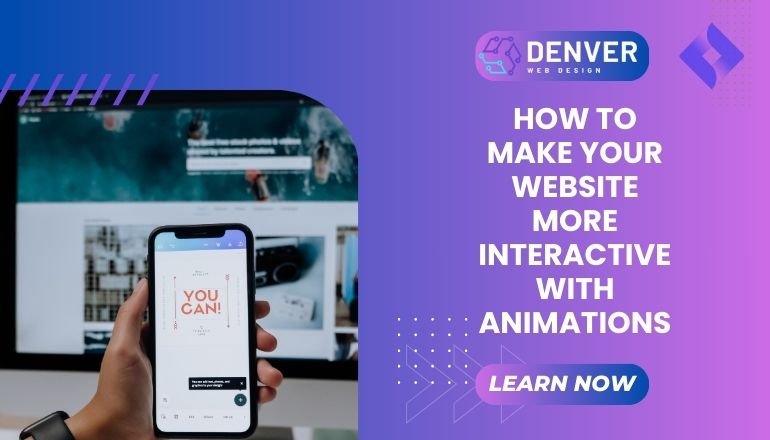
In today’s competitive digital landscape, making your website stand out is critical. One effective way to engage users and elevate the overall experience is by incorporating animations. When done right, animations can breathe life into your website, guiding users through content, emphasizing important elements, and improving user interaction. By following best practices in web design, businesses can use animations to create more memorable online experiences.
At Web Design Denver, we specialize in integrating interactive elements seamlessly into your website to help you captivate your audience.
What Are Website Animations?
Website animations are dynamic visual effects designed to enhance user interaction. They range from subtle hover effects and scrolling transitions to more complex interactive features like loading spinners or animated graphics. These elements are created using technologies such as CSS, JavaScript, or libraries like GSAP and Lottie.
Animations fall into two main categories:
- Micro-interactions: Small, purposeful animations like button hovers, progress indicators, or form feedback that provide immediate user responses.
- Page Transitions and Visual Effects: Larger animations, such as parallax scrolling, animated headers, or background motion, create a sense of depth and flow.
Related terms like responsive web design, adaptive design, and user-friendly navigation ensure these animations perform well across all devices.
Why Are Animations Essential for Modern Websites?
- Improved User Experience (UX):
Animations make interactions more intuitive by visually guiding users through your website. For example, subtle animations on a CTA button can indicate it’s clickable, while a form field shake can signal an error. These usability improvements are rooted in UX design principles.
- Enhanced Visual Appeal:
Animations add vibrancy to your website, making it more engaging and modern. A visually captivating site is more likely to retain visitors and keep them browsing longer.
- Increased Conversions:
Strategically placed animations can direct attention to critical elements, such as product features, discounts, or CTAs, leading to higher conversion rates. By leveraging conversion rate optimization (CRO) techniques, businesses can turn animations into a tool for driving results.
- Stronger Brand Identity:
Custom animations tailored to your brand can make your website feel unique and memorable. This is especially important in custom web design, where personal touches set you apart from competitors.
Key Features of Interactive Animations
When incorporating animations, focus on these features to ensure they enhance your website:
- Seamless Integration: Animations should align with your website’s overall design and branding, complementing rather than overshadowing content.
- Performance Optimization: Use lightweight animation libraries and compress assets to ensure animations don’t slow down your site.
- Responsiveness: Ensure animations work across all devices by testing them in a mobile-first design approach.
- Interactive Feedback: Provide real-time responses to user actions, such as a button changing color or size when clicked.
Best Practices for Using Animations
- Keep It Subtle: Avoid overusing animations. Subtle transitions or hover effects can enhance the user experience without overwhelming the visitor.
- Prioritize Speed: Ensure animations are quick and smooth, typically under 500 milliseconds, to avoid frustrating users.
- Focus on Functionality: Use animations to solve specific problems, such as guiding attention to important areas or providing feedback.
- Test for Performance: Regularly test animations to ensure they don’t negatively impact loading speeds or cross-browser compatibility.
- Accessibility First: Include alternative text or descriptions for visually impaired users, and avoid animations that can trigger discomfort, like rapid flashing.
Common Mistakes to Avoid
- Overloading the Website: Excessive or complex animations can slow your site and distract users. Focus on quality over quantity.
- Ignoring Mobile Optimization: Without responsive animations, mobile users may experience glitches or misaligned visuals.
- Neglecting SEO Impacts: Animations shouldn’t hinder website performance, as slower sites can harm SEO rankings.
- Skipping User Testing: Failing to test animations on various devices and browsers can result in inconsistent user experiences.
Conclusion: Key Takeaways
Incorporating animations into your website can transform it from static to interactive, leaving a lasting impression on users. By focusing on responsive web design<span style=”font-weight: 400;”>, optimizing performance, and aligning animations with your brand, you can create a dynamic and user-friendly platform.
For businesses looking to enhance their online presence, Web Design Denver offers expert web development services to help integrate stunning animations without compromising performance. Start designing an interactive website today to captivate your audience, boost engagement, and drive conversions.






